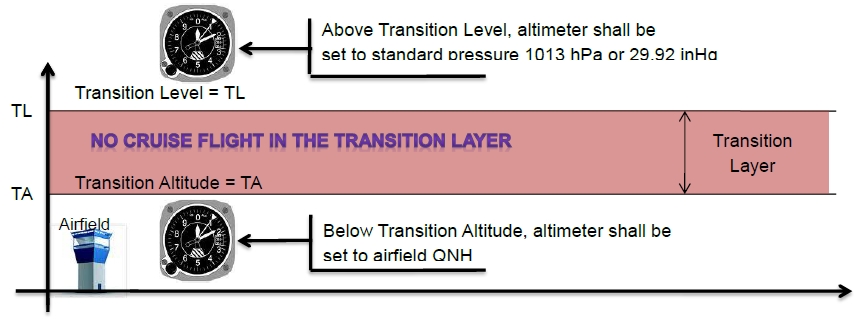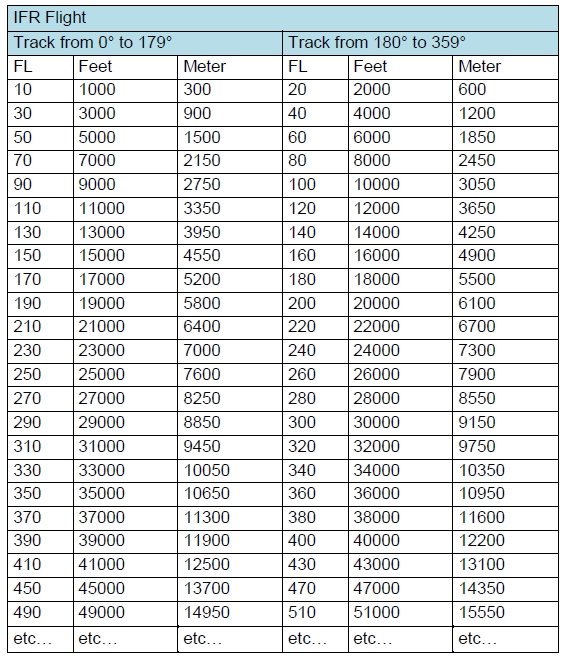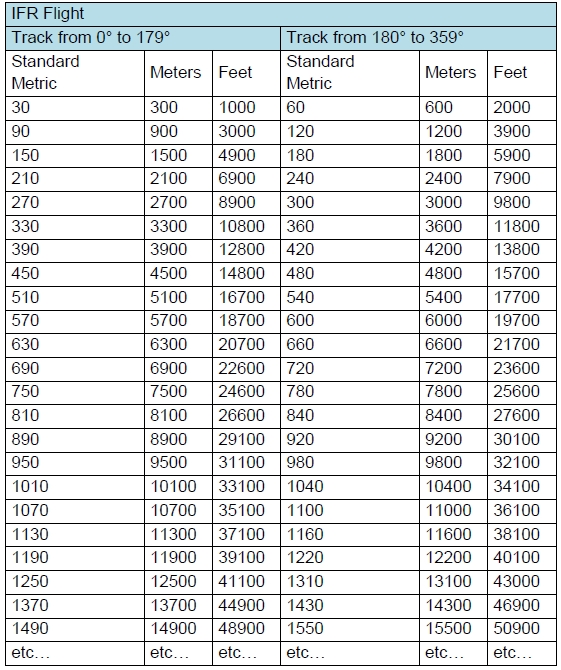¶ Introduction
When you are an IFR pilot, you must respect minimum rules in order to select a cruise altitude or flight level. This article will help you choose one of the possible solutions.
¶ IFR altitude and level restrictions
¶ Minimal altitude
All IFR flight shall be flown except for take-off, landing or except by emission from the appropriate authority:
- At a level which is not below the minimum flight altitude established by the local regulation (published on charts).
- At a level which is a least 600m or 2000ft above the highest obstacle located within 8km of the estimated position of the aircraft, in mountainous areas, when no minimum flight altitude has been established
- At a level which is a least 300m or 1000ft above the highest obstacle located within 8km of the estimated position of the aircraft, elsewhere than the two first items, when no minimum flight altitude has been established.
Note that there is no maximal altitude in IFR flight. Only your aircraft performance and the chosen route constraints can limit the altitude. The maximum controlled flight level is usually FL660.
¶ Cruise altitude or flight level selection
¶ Transition layer constraints
No cruise flight level or cruise altitude can be chosen in the transition layer.
The transition layer is the airspace between the transition altitude and the transition level.
Consult our altimetry documentation for pilot or controller in order to have more information about transition layer, transition altitude and transition level.

¶ Available IFR levels
Except where otherwise indicated in air traffic control clearances or specified by the appropriate ATS authority, IFR flights when operated above minimum flight altitude as specified shall be conducted at a flight level/altitudes appropriate to the track as specified in the following levels:
- IFR flights use altitudes ending with the number 000: 5000ft, 6000ft, 7000ft, 8000ft, 12000ft, ...
- IFR flights use flight levels ending with the number 0: FL50, FL60, FL70, FL210, FL320 ...
The cruise altitude or cruise flight level must be chosen using this assigned rule and must follow the semi-circular rule depending on the heading of the aircraft (see next chapter).
Note that VFR flight levels end with final number 5 and not 0. This provides enough separation between VFR and IFR flights and adequately avoids possible conflicts during the cruise phase.
¶ Odd and even flight levels
For answering to the need of flight level separation between the same types of flight, flight levels have been separated in two categories, the even and the odd flight level:
- Even flight level: the last number before the final number 0 shall be even: FL80, FL120, FL260 ...
- Odd flight level: the last number before the final number 0 shall be odd: FL90, FL130, FL270 ...
This rule is applicable for flight levels below FL290. This rule is applicable only for flight levels between FL290 and FL410 in RVSM airspace.
Consult the available tables at the end of this document in order to select your flight level or altitude.
¶ Semicircular rule
¶ Default worldwide semicircular rule
The default worldwide semi-circular rule is the East/West orientation of the flight level parity:
Your aircraft has track between 0° and 179°, your flight level or altitude must be odd. Your aircraft has track between 180° and 359°, your flight level or altitude must be even.

By following the semi-circular rule, an IFR aircraft will limit possible conflicts with another aircraft coming from the opposite direction through providing 1000ft separation between opposite west/east tracks.
¶ Specific semicircular rule
In some counties due to IFR routes or special regulations set by the local administration, the semicircular rule can be the North/South orientation of the flight level parity:
- Your aircraft has track between 90° and 269°, your flight level or altitude must be odd
- Your aircraft has track between 270° and 359° & between 0° and 89°, your flight level or altitude must be even.
¶ List of available flight level and altitude
Since year 2010, the worldwide airspace respects the RVSM regulation between FL290 and FL410 except for some local areas around the world. (RVSM = Reduced Vertical Separation Minimum)
Magnetic track, or in polar areas at latitudes higher than 70 degrees and within such extensions to those areas as may be prescribed by the appropriate ATS authorities, grid tracks as determined by a network of lines parallel to the Greenwich Meridian superimposed on a polar stereographic chart in which the direction towards the North Pole is employed as the Grid North.
¶ In a RVSM airspace
In areas where feet are used for altitude and where, in accordance with regional air navigation agreements, a vertical separation minimum of 1000 feet is applied between FL290 and FL410 inclusive.

¶ In a RVSM metric airspace
In areas where metres (meter) are used for altitude and where, in accordance with regional air navigation agreements, a vertical separation minimum of 300 m is applied between 8 900 m and 12 500 m inclusive.

¶ In a non-RVSM airspace
If your airspace is a non-RVSM airspace, a vertical separation minimum of 2000 feet is applied between FL290 and FL410 inclusive.
For the level below FL290 and above FL410, you must select the flight level according the table in RVSM airspace.

¶ In a non-RVSM metric airspace
If your airspace is a non-RVSM airspace, a vertical separation minimum of 600 m is applied between 8 900 m and 12 500 m inclusive.
For the level below 8 900 m and above 12500 m, you must select the flight level according the table in RVSM airspace.

- None
- None
- VID 150259 - Creation
- VID 435695 - Wiki integration
- VID 496402 - Wiki.js integration